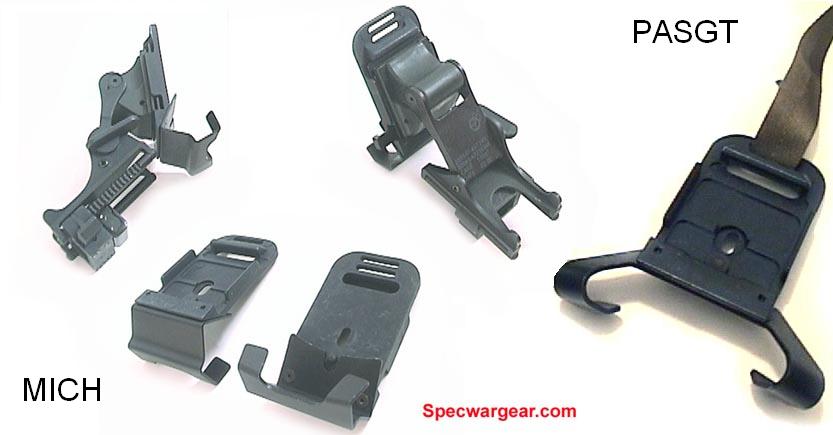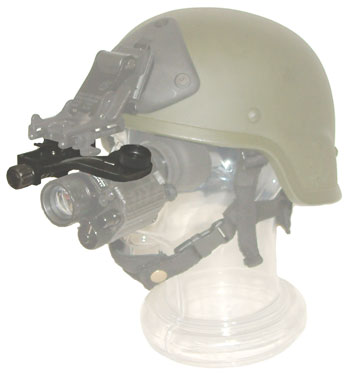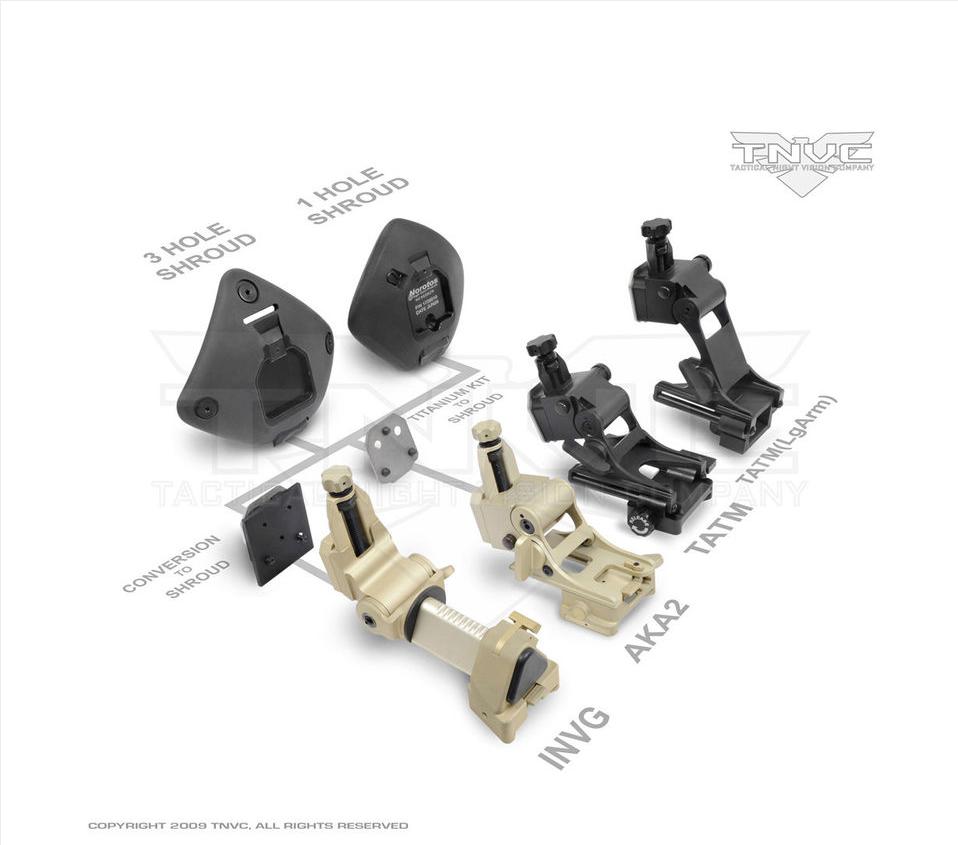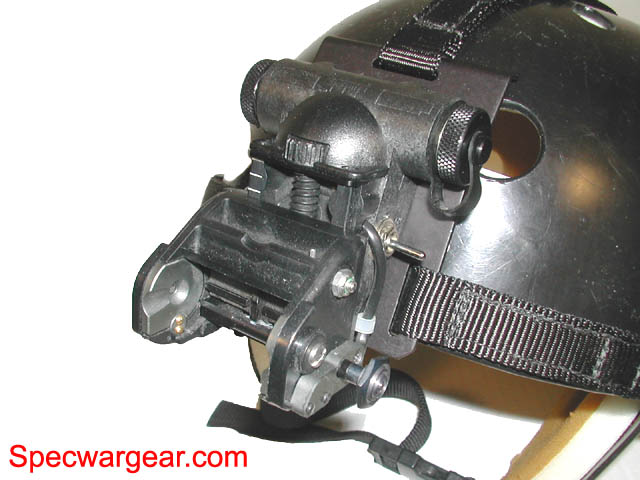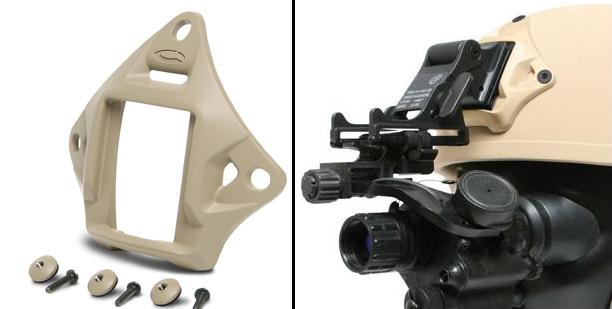Get the weekly SPARTANAT newsletter.
Your bonus: the free E-Book from SPARTANAT.
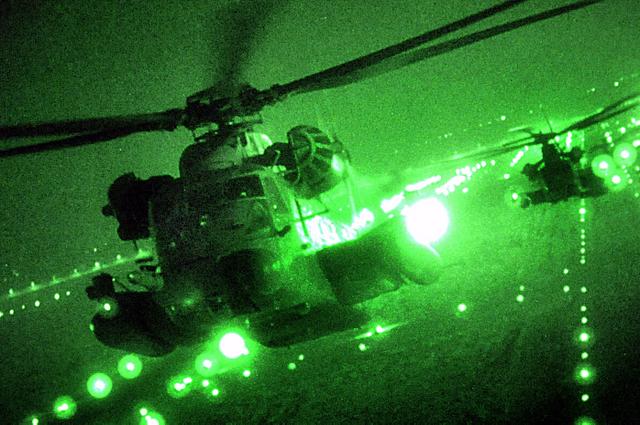
BASICS: NVG arms and their attachment
This text outlines the evolution of night vision device attachments over the years, covering four main types: USGI, ANVIS, Norotos, and Wilcox. Various mounting solutions are discussed, highlighting advancements and adaptations to different helmet types. Evolving technology continues to drive improvements in night vision device attachment systems.
At the beginning there was darkness. Then came the green darkness. This was organized by various night vision devices. And over the years, many developments emerged to attach these to the helmet, illuminating the darkness (or light) of the world. Today we want to give you a brief overview of the most common variants. Basically, there are four different types of attachment, partly named after the manufacturers: USGI, ANVIS, Norotos, and Wilcox.
At the beginning of our overview is the AN/PVS7 as the standard night vision device. With it came the so-called USGI Mount, which is still the standard for regular US soldiers. It consists of a rectangular plate that is screwed or strapped to the helmet. The Rhino Arm is hooked into it. The AN/PVS 7 is then inserted into the shoe using the Rhinohorn. There are two different plates for helmets, one for the old PASGT and one for the current MICH.
The system was designed by the company Norotos and they still supply the Army with it. As everything evolved, eventually the AN/PVS 14 was introduced. The mounting remained the same, but now an additional adapter, the J-Arm, is necessary. All in all, it is a rather shaky affair, so the Dovetail was designed for the connection from arm to NVG. This is used by the AN/PVS 15 and AN/PVS 18, among others.
Norotos introduced their 3-Hole Shroud, which you probably know from many SF pictures. The difference here is the shape of the plate on the arm, which is now a hexagon and the direction of insertion. With the USGI, the arm is first threaded into the mount at the top and then pressed towards the helmet, while with the 3-Hole Shroud it is the other way around. There are arms with Rhino as well as with Dovetail for this shroud. Initially, there was only the TATM-Arm, then the others pictured.
Subsequently, the attachment solution by Wilcox was introduced. It actually differs completely from Norotos with a "Break Away Feature", meaning that the arm disconnects automatically if the NVG hits something solid. This has the advantage that you neither break your neck nor hit the NVG in your face, at least theoretically. Furthermore, the arm itself is very complex, but almost everything can be adjusted.
The mounting for the ANVIS NVG should also be mentioned. This device actually comes from the aviation, where it is used by helicopter pilots. The mount is screwed directly onto the helmet and also serves as the holder for the NVG. So no extra arm is needed. The battery compartment goes to the back of the helmet and also serves as a counterweight. The mount in the picture has the battery compartment at the front. Meanwhile, all manufacturers also offer adapters for the ANVIS so that it can be used with their shroud.
An extremely interesting development, in our opinion, was the VAS Shroud by OPS CORE, which reintroduced the USGI standard as a mounting plate between the shroud and arm. This has pushed Norotos and Wilcox to design arms for pretty much all NVGs available on the market. And it keeps evolving...
SPARTANAT is the online magazine for Military News, Tactical Life, Gear & Reviews.
Send us your news: [email protected]
Ad
similar
Get the weekly SPARTANAT newsletter.
Your bonus: the free E-Book from SPARTANAT.


